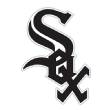Before the year began, when we wondered whether the World Series champion would get an asterisk for the season being so short/anomalous/weird, I offered this prediction: The winner would be seen as just as legitimate as in any other year, especially with an extra round of playoffs making the October run that much harder. And the losers — the other 29 teams — would get to put asterisks on their failures. Nobody would hold any losing seasons against them.
That last part didn’t quite turn out to be true. The Angels and Phillies dropped their general managers. The Red Sox (and, oddly, the White Sox) fired their managers. And, of course, on individual levels, players had seasons that got them released, non-tendered or demoted.
But it should be true. The season really was too short to sort out all the tricks that small samples can play. The postseason really was longer, and thus more treacherous. COVID-19 really did disrupt routines, affect players, and throw the schedule around like a canoe in a hurricane. Every team should be generous with itself when assessing this season.
And, thus, so shall we. Each year we rank the teams based on their preseason goals and expectations. Generally, a dozen or so teams come away from our exercise deemed successes, with seasons they wouldn’t give back. This year, we’re not so much ranking the teams by success as looking for their successes. Put an asterisk on the failures — let’s find the successful moments from this season that every team can hold on to as real.
Jump to a team:
American League
National League

The great individual performances
Cleveland Indians: Shane Bieber’s six shutout innings on Aug. 20
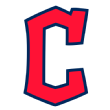
The shortness of the season truly messed up all the great statistical performances — it’s hard to know intuitively that Ronald Acuna Jr.’s 14 homers were a lot, and it’ll be harder still for people in the future — but it also preserved a few perfectly in amber. As a starter, Shane Bieber had the second-best ERA+ in the live-ball era. He had the 15th lowest FIP, the all-time highest K/9 and K%, the seventh-lowest hits per nine, the fourth-lowest OPS allowed and the third-lowest OPS+. We can’t quite put this achievement on the level of Bob Gibson in 1968 or Pedro Martinez in 2000, since our rational brains know that maintaining such a pace for four more months is neither easy nor likely. But we got to see — and Cleveland got to see up close — what the most dominant pitching season ever would look like. It would look more or less like what Shane Bieber did every fifth day.
New York Yankees: Luke Voit’s 20th home run, Sept. 26

The Yankees have won 27 World Series titles, by far the most of any franchise, but it’s not as much 27 great teams as four all-time dynasties: The Babe Ruth block of seasons (four titles), the Joe DiMaggio block (10, if you include the one when he was off making $21 a month in the Army), the Mickey Mantle block (six, not counting the one that overlapped with DiMaggio) and the Jeter/Rivera block (five). That’s 25 of the 27, with the back-to-back titles of the late 1970s rounding it out. For now, they’re waiting for the next block to begin. They did not get closer to the goal this year; they did not necessarily get farther from it, either.
There’s another way to capture the Yankees’ dominance over the past century or so, which is a little bit more broadly distributed. The Yankees entered this season having produced 13 different home run champions since 1916, totaling 29 home run crowns: Wally Pipp, Ruth, Bob Meusel, Lou Gehrig, DiMaggio, Nick Etten, Mantle, Roger Maris, Graig Nettles, Reggie Jackson, Alex Rodriguez, Mark Teixieria and Aaron Judge. To that, this year, they added a 14th: Luke Voit, the only player to top 20 in the short season. In a full season, his total would prorate to 59.4.
Meanwhile, they also got a small but significant glimpse at the possibility of a 15th home run champ, when Giancarlo Stanton hit four homers in five postseason games. Not that anybody doubts Stanton can hit the ball harder than anybody in baseball. But it was a reminder that a) he’s still here and b) he’s still basically the hitter the Yankees traded for, the one who hit 59 for the Marlins in 2017.
Washington Nationals: Juan Soto’s two hits on Aug. 5, his first game of the season

If you had to bet on who the best hitter in the world is right now — who will be the best hitter in the next day of baseball played, or over the next full season — you’d have to bet on Juan Soto. It wouldn’t be an easy bet, the way it was picking Trout from 2015 to 2018 or Albert Pujols in the late 2000s or Barry Bonds in 2003. But it’s probably Soto, graduating from “most precocious hitter of his era” to something else entirely. He led the league in all three of the slash lines, the slash-line triple crown, and it wasn’t just a high batting average floating everything else. If you disentangle the slash line into three distinct skills — the ability to hit for average, to reach by walks and hit by pitches, and to hit for extra power — he is nearly unmatched in any facet of offense:
-
Batting average: Second in majors, first in National League
-
Walks+HBP rate: Best in majors
-
Isolated Power: Best in majors
Let’s update a comparison: Through age 21, Ted Williams had played two full seasons, while Soto has played three, including the abbreviated COVID-19 season. They had an almost identical number of plate appearances — 1,338 for Ted, 1,349 for Juan. Here’s how they stand:
-
.336/.439/.601, 161 OPS+, 54 HRs and 203 BB
-
.295/.415/.557, 151 OPS+, 69 HRs and 228 BB
There are just four other players with numbers at that level through age 21: Ty Cobb, Rogers Hornsby, Jimmie Foxx and Mike Trout.
Milwaukee Brewers: Devin Williams’ two-inning hold on Sept. 22
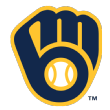
Lowest ERA since 1900, minimum 25 innings:
1. Earl Moore, 0.00, 1908
2. Devin Williams, 0.33, 2020
Lowest FIP, same minimum:
1. Craig Kimbrel, 0.78, 2012
2. Williams, 0.86, 2020
Highest strikeout rate, 25+:
1. Williams, 53%, 2020
2. Aroldis Chapman, 52.5%, 2014
It was only 27 innings. Can we say it was the greatest relief season ever, if it was just 27 innings, a mere 1.2 WAR? Probably not. But is it disqualified from all superlatives, from all records? Can’t we agree on “most dominant relief season of all-time”? At least when it suits whatever argument we’re trying to make at the time?
Atlanta Braves: Freddie Freeman’s 13th-inning walk-off in Game 1 of the wild-card round

It was the best offensive season in the club’s history — the highest OPS+ in club history, the most runs per game since the 1800s — and there are plenty of moments, developments and fun facts to celebrate: They scored 29 runs in a game! Ronald Acuna Jr. hit the majors’ longest home run of the season! Marcell Ozuna led the National League in homers and RBIs, and came within 13 points of the batting crown! Adam Duvall had two three-homer games!
But the main story was Freddie Freeman, likely the National League’s MVP. After a slow start, he hit .384/.500/.720 over the final three-quarters of the season, and for perhaps the first time I would look at him and feel like we might be watching a Hall of Fame career. He’s probably not quite on that trajectory, with a WAR-through-30 number comparable to Will Clark, Mark Teixeira, John Olerud and Fred McGriff — but also comparable to Willie McCovey and Jim Thome (both inducted) and Joey Votto (who has a good shot). The question is whether he simply had the best 45-game stretch of his excellent career, or whether he is, indeed, improving.

The rebuilders that were actually more competitive than we expected
Baltimore Orioles: The 10-9 win in Philadelphia on Aug. 11
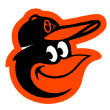
Ignoring pennant implications, or lack of them, the most entertaining game of this season was the one played on Aug. 11 between the Phillies and Orioles. The lead ricocheted wildly — 3-0 one way, then 5-3 the other, then 6-5 in the other direction, then 8-6 in reverse, all of that coming in the sixth inning or later. A total of five runs scored in the ninth inning — including two on a two-out, bases-loaded infield popup that landed when Jean Segura stumbled on the mound — and the game settled at 8-8 when the ninth inning concluded. And that is when it got really fun:
With the starting runner on second base to begin the 10th inning, the Orioles’ Austin Hays lined to center field. “I didn’t think he had any chance at all to catch it when I first hit it,” Hays said, but Roman Quinn — the fastest man in the majors — charged hard. Without the runner on second, Quinn surely would have played it on a bounce, but under the new extra-innings rule that would allow the go-ahead run to score, so Quinn laid out for it. His dive forward was short; the ball bounced past him; and Quinn had to get back up and use his speed to run in the opposite direction. Hays raced home with an inside-the-park home run.
The Orioles survived the bottom half of the inning — after the tying run reached third with one out — and improved to 9-7, tied with Tampa Bay. “The Orioles might not win 10 games,” one smart-aleck pundit had predicted before the season, but until a sweep by the Yankees in September they were almost in the pennant race. Even their final, losing record of 25-35 was kind of a success, definitely a surprise and good enough to beat the Red Sox.
Detroit Tigers: The 12-1 victory over the Brewers on Sept. 1

Here’s a funny thing: The 2019 Tigers began their season 16-17 and finished 47-114, the sixth-most losses in the modern era. The 2020 Tigers began their season 17-16, just one win better, but by that point in 2020 it was already September and the Tigers had spent most of the season as stealth contenders. They kept playing games with playoff implications into the final month of the season, and if they didn’t actually outperform projections, they outperformed perception.
The 2020 group really was far more encouraging than the 2019 one. The 2019 Tigers ended up with one above-average hitter, and he (Victor Reyes) did so just barely and in only a half-season’s worth of playing time. The 2020 Tigers had five hitters who were better than average, including the promising 23-year-old shortstop Willi Castro, who hit .349/381/.550 in his 36 games.
Seattle Mariners: The Austin Nola trade on Aug. 30

The Mariner from this club who is most likely to lead Seattle to the postseason someday is Kyle Lewis, and his home-run-saving catch in the apocalyptic haze of September’s Pacific Coast wildfires is part of the “let me show you about 2020” collage. And that was his second-best home-run-saving catch; this one was even better.
But the Mariners’ best player over the entire season was probably not Lewis, but Dylan Moore. Moore, 27 years old and in his second big league season, played seven positions for Seattle and had the American League’s 16th-best OPS+. And the Mariners’ best player at any point in the season was probably not Moore but Austin Nola, a catcher who played so well he got traded to San Diego, with two relievers, for a haul that surprised almost everybody: a top-100 prospect, two young players who immediately stepped in as everyday players and a 21-year-old pitcher who had been an effective big league reliever in 2019 before needing Tommy John surgery this year.
What makes Moore and Nola so notable is this: Both were signed as minor league free agents before the 2019 season. Minor league free agents — players who reach their free agency by ending their seventh minor league season without making the 40-man roster — almost never turn into impact players. FanGraphs’ Carson Cistulli once surveyed the 1,600 minor league free agents over a three-year period and found that only 1% had been worth even 0.5 WAR. Only two (out of 1,600!) had topped 2 WAR, the number associated with an average major leaguer playing full time. Prorated over a full season, Moore and Nola easily would have topped 2.0. And the Nola trade could improve Seattle for many years to come.
San Francisco Giants: Alex Dickerson’s three-homer game on Sept. 1

From 2011 through 2019, here’s where the Giants ranked in home runs hit at home:
2011: 30th
2012: 30th
2013: 29th
2014: 26th
2015: 29th
2016: 29th
2017: 30th
2018: 29th
2019: 29th
Even when the Giants were good — they won the World Series in 2012 and 2014 — they could barely put one over the fence at home, so it wasn’t necessarily a problem. Maybe it was just a characteristic.
But then it became a problem. By 2017, the Giants no longer had the great pitching to compensate, and after the juiced ball appeared in 2016, the rest of the league was going home run wild. It was all starting to get in the Giants’ heads. This year, they finally got it out of their heads: They finished seventh in the majors in home runs at home. Brandon Belt, forever punished by his ballpark, hit .383/.505/.741 at home.
It wasn’t just that the Giants changed the dimensions to help the Oracle Park play more evenly. The Giants finished 12th in home runs overall, and the season was, uncharacteristically, filled with offensive highlights. Dickerson tied a major league record with five extra-base hits in a game, including three homers. Mike Yastrzemski led the majors in win probability added. The Giants had nine hitters with an OPS+ over 100 in at least 100 plate appearances, more than any other team. For the first time in a long time, the Giants hit. If MLB had let just one more team into the postseason, it would have been them.

The stars who had star seasons
Chicago Cubs: Yu Darvish’s one-hitter on Sept. 4
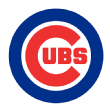
This is a different category than “great individual performances” — though Yu Darvish, with a 2.01 ERA and the league’s lowest FIP, was certainly a great individual performer. The excellent seasons in this category all came under the burdens we collectively put on stars who were costly to acquire. It’s a cruel part of the game, but it’s how fans work: The longer a star is going to be around, the shorter the fans’ patience often is with him. Anyway, Darvish is one of the 10 best pitchers in baseball again, and everything about his presence is now pleasant.
Philadelphia Phillies: Bryce Harper’s big game on Aug. 22

On this day, Bryce Harper hit a 470-foot home run — the fourth longest in baseball this year — and, in character, walked twice. His slash line after that game was .343/.478/.714. It fell off from there, but for the first time since 2017 he didn’t look like a star in decline.
New York Mets: Doubleheader sweep of the Yankees on Aug. 28

Robinson Cano had a pair of hits and finished the day with an OPS over 1.000, and at the end of the season he would still have his best batting line since he was a Yankee, back in 2013. Edwin Diaz threw a perfect inning to save Game 1, striking out all three batters he faced. He would finish the year with a 1.75 ERA and the majors’ third-highest strikeout rate. If either player had done anything on that level in 2019, the Mets would probably have topped the Brewers for the final playoff spot. Better late than never.
The Mets, alas, would end the day 15-16, the closest they got to .500 after the first week of the season but under .500 nonetheless. But if any team most suffered from the early end to the season, it was probably the Mets, who had one of the league’s best offenses and could easily have snapped off a 62-40 stretch over 102 more games. Those games will have to wait until 2021, but among the reasons the Mets can feel hopeful are Cano and Diaz, doing what they were expected to do when the Mets traded for them. (Each is under contract through 2023.)
St. Louis Cardinals: Clinching a playoff spot on the final day of the season; not needing to play a makeup doubleheader against Detroit the next day

Paul Goldschmidt‘s OPS+ from 2017 to 2019:
2017: 142
2018: 142
2019: 115
The last one was his first with the Cardinals, and at the age of 31 he was very plausibly in decline, before his five-year contract extension had even kicked in. First base is a tricky position to carry when your bat starts slowing and league average approaches, so for Gold-
2020: 142
Ahhhhhh, there we go.
Minnesota Twins: Kenta Maeda’s final start, on Sept. 23

Kenta Maeda, acquired in trade the previous winter, had a lot in common with Trevor Bauer this year: Both players were acquired by a team that needed another top-tier starter for the postseason, both were exceptionally good, both were Cy Young finalists. Each made a strong postseason start, but it wasn’t enough for either one’s team to advance. And, as Bauer set the all-time record for fewest hits allowed per nine innings by a starter, Maeda finished second with the lowest WHIP all time by a starter (behind only Pedro Martinez’s best season). The main difference: Bauer is now a free agent, a blip in the Cincinnati Reds’ history. Maeda is a Twin for three more years.
Boston Red Sox: Alex Verdugo’s two-homer game on Aug. 7

The Red Sox should probably be taking out full-page ads in the newspaper every day to apologize to their fans for trading Mookie Betts, and Betts’ incredible season — he led the majors in WAR, he led the Dodgers to a World Series title, he did everything just perfectly — gives this period of the Boston franchise a sort of rotting smell. OK, but now just imagine how bad it would be if Alex Verdugo had failed on top of that? He didn’t. He was actually really good, and might be Boston’s best player, which is a small mercy to the Red Sox front office and a huge one for Verdugo.
Los Angeles Angels: Mike Trout’s Aug. 10: Four hits, two homers, one the tiebreaker in the ninth
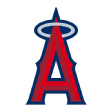
If you’re obsessed with the durability of Mike Trout‘s eventual place in baseball history, as I am, this season was something of a disaster for the GOAT trajectory. For the first time he didn’t lead the league in any statistical category; he’ll probably have the lowest MVP finish of his career; he didn’t make the playoffs again, even with the expanded playoff schedule that seemed almost personally directed at getting his Angels into October; and, simply because 102 games were erased from the baseball schedule, his march to any number of career records lost pace. Because of that, he’s no longer the “most WAR through age [whatever age he is that day]” record-holder. Because of Mookie Betts, he’s no longer even the clear, consensus best player in the game. And, yes, the numbers dropped a little. He had his lowest OPS+ ever, and — prorated for a 162-game season — his worst WAR.
All of that, though, and he’s still outrageously good. He didn’t lead in any statistical category, but he finished third in homers, third in RBIs, third in OPS+, fourth in OBP, fourth in runs scored. He’ll have the lowest MVP finish of his career but will still get plenty of votes, despite playing for a losing team. He still has the third-most WAR through age 28, he’s still ahead of Hank Aaron and Barry Bonds’ home run totals through this age. He might not be better than Mookie Betts any more; also, though, he might be. His numbers dropped a little, and his OPS+ is still higher than every David Ortiz season but one. He’s still himself, and still too good to appreciate.

The playoff-drought breakers
Toronto Blue Jays: Clinching a postseason spot on Sept. 25
Cincinnati Reds: Clinching a playoff spot on Sept. 26
Miami Marlins: Clinching a playoff spot on Sept. 26
Every team starts the year just trying to win the first game, and from there standards of team success get grouped into tiers:
-
Don’t finish last
-
Finish over .500
-
Stay relevant; play games that matter in the final week of the season
-
Make the playoffs
-
Win a playoff game
-
Win a playoff series
-
Make the World Series
-
Win the World Series
Each new tier brings different rewards, and failing to reach each tier brings different pains, but the gap between the tiers isn’t equal. The gap from Tier 3 to Tier 4 is probably the second biggest jump in pleasure; the drop from Tier 4 to Tier 3 is probably the biggest jump in pain. As with winning the World Series, that is the one tier that can totally redefine not just one season but a whole stretch of seasons. A playoff drought of even a few years can be a team’s entire personality. Managers get fired for that.
It’s quite possible that none of these three teams would have made the playoffs in a regular season, or even this exact season but with a normal playoff format. If there were the typical five spots per league, the Blue Jays wouldn’t have made it; the Marlins and Reds would have tied, with the Cardinals, for the final spot. Maybe that matters a little, but I don’t think it matters much. The Blue Jays made their first postseason since 2016, a modest drought; the Reds made their first postseason since 2013, which was actually the last time they had finished higher than fourth; the Marlins made their first since 2003.
None of these teams went very far — though the Marlins had a satisfying sweep of the Cubs in the wild-card round — but the postseason appearances did their job. When you scroll through the franchise pages looking for the big white spaces where the playoff droughts are, these seasons will cut the white space off. They’ll serve as fences, keeping those white spaces contained to little yards in the past.

A hodgepodge of successes
Oakland Athletics: Opening day — A’s 7, Angels 3 (10 innings)
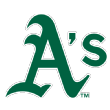
I still can’t get over this fact: Thanks to the in-region scheduling, the A’s played only six games against teams at or over .500. Obviously, that’s in a short schedule, but that’s still 90% games against losers. Since 1998, when MLB expanded to 30 teams, only one team has faced even three-quarters losing teams, and no team has topped 80%. So if the A’s never played anybody good, are we even sure they were good?
Here’s how they did against sub-.500 teams, relative to the rest of the majors against sub-.500 teams:
Runs scored per game: 4.70, 22nd best.
Runs allowed per game: 3.70, seventh best.
Winning percentage: .630, eighth best.
There are some mixed messages there, but if we compare the A’s to the rest of the league while controlling somewhat for the quality of competition they faced, then yes, the A’s still come out looking pretty good. They were not a fluke of bad opponents. They were probably not the fifth-best team in baseball, as their raw record might suggest, but they were — and, likely still are — a legitimate postseason contender.
They also had a neat trick: They never lost extra-inning games. They won the first game ever played under the new rules, walking it off on a Matt Olson grand slam-an early indication that the runner-on-second provision wouldn’t lead only to boring sacrifice-bunt-and-sacrifice-fly conclusions. They went on to win all six extra-long games they played, including a 13-inning marathon against Houston. (That win would, ultimately, stick Houston with a losing record on the season, which is how Oakland ended up facing so few teams with winning records.)
Pittsburgh Pirates: Ke’Bryan Hayes’ 5-for-5 on Sept. 26

For a few years, we were tracking an interesting trend: Young position players were arriving earlier, hitting better and reaching their peak more quickly than they ever had before. That was not the case this year. Players 25 and under hit just 95% as well as the league as a whole, the worst split performance by young players since 2003. And position players with rookie eligibility were especially bad: After averaging about 50 collective WAR per season over the previous four years, the 2020 rookie hitters produced just 5.8 WAR. That’s notably low even adjusting for the shortened season, with rookies’ WAR per plate appearance coming in less than 40% of normal. The rookies were terrible! Combine that with the lack of any minor league games, and the usual avenues for a rebuilding team to feel good about themselves — a few promising debuts, a bunch of leaps taken in the minor leagues — were closed off.
There were a few successes. Kyle Lewis was a success in Seattle. Parts of Luis Robert‘s season, and parts of his game, were incredibly successful in Chicago. On the pitching side, Ian Anderson in Atlanta, Triston McKenzie in Cleveland and Sixto Sanchez in Miami matched hype and arrival.
Atop all the rookies, though, was Ke’Bryan Hayes. No hitting prospect debuted with the same combination of hype (Hayes, the son of ex-big leaguer Charlie Hayes, was a first-round pick and a top-50 prospect) and immediate success. In just 95 plate appearances, he led all rookie hitters in WAR, and among all hitters with at least 75 plate appearances he was second in OPS+. His debut start itself was noteworthy — his six total bases made it the 22nd most productive major league debut ever. There were only four hitters this year who had a 5-for-5 game, and Hayes was one of them.
Arizona Diamondbacks: A 4-0 win Sept. 25, with Zac Gallen striking out a career-high 10

There’s a San Francisco Examiner headline from 1961 that I think about a lot:
The order of clauses, especially around a “but,” changes so much in a sentence. ‘Giants Lose — But Still Sharp’ would convey a totally different tone, encouraging rather than exasperated. (Don’t even get started on the exclamation point, which turns the thing from despairing to cruel.) The Diamondbacks this year lost. But if it could be said that a 25-35 club was still sharp, then we could say it about Arizona. They led the majors in “productive” outs. They took the fifth-most “extra” bases as baserunners, and they made the third-fewest outs on the bases. They hit well with runners on base and drove in a higher percentage of their baserunners than all but six other teams. They got the runner in from third with less than two outs, better than 20 other teams did. Their defense was not worse than average. They blew only one game that they led after the seventh inning. They lost. They went 2-18 at one point and ended up in last place. But that’s just because their three starters at the top of their rotation entering the season ended up with a combined ERA of 6.85. Still sharp!
Texas Rangers: The announcement of Gold Glove winners on Nov. 3

The snarky answer, offered to us by CBS Sports’ R.J. Anderson, is that the Rangers earned home-field advantage in the World Series. But in a season in which nearly every hitter did worse than projected, there was some conciliation in the field. Joey Gallo (in right field) and Isiah Kiner-Falefa (at third base) each won Gold Gloves, and rookie Leodys Taveras was excellent in center field. For Gallo and Kiner-Falefa, the hardware really is excellent publicity, as Gallo is often misidentified as one-dimensional and Kiner-Falefa is perhaps the most anonymous Gold Glove winner since … Darwin Barney? Or ever?
Kansas City Royals: Trevor Rosenthal’s dominant four-out save on Aug. 8
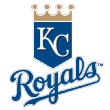
It takes three of something to make a trend piece, so somebody should have written this one: Three of the best relievers in baseball this year were pitchers who had recently dealt with control problems so severe they could have ended their careers — and, in two cases, appeared to have:
-
Daniel Bard — formerly a Red Sox setup man — hadn’t pitched in the majors in seven years, after a stretch in 2013 and 2014 in which he walked 45 batters in 16 innings across multiple levels. For the Rockies this year he saved six games, had a 3.65 ERA and walked only eight batters unintentionally in 25 innings.
-
Tyler Matzek — once a Rockies first-round pick and top-50 prospect — left organized ball after 2016, when he walked 33 batters in 27 innings at Double- and High-A. He worked his way back through the independent leagues and this year dominated big leaguers with Atlanta, walking just 10 while posting a 2.79 ERA in 29 innings.
-
And Trevor Rosenthal was released by the Nationals’ historically bad bullpen in 2019 after walking 15 in six innings, including a nightmare stretch when the first 10 men he faced to start the season all reached base safely.
The last one is who interested the Royals, and in Kansas City this year Rosenthal — signed to a minor league deal before the season — reemerged as one of the league’s best relievers. He had the sixth-highest strikeout rate (minimum 20 innings), the 17th-best FIP and the seventh-most saves. He ended the season saving games for the Padres, having netted the Royals a potential major-league-ready regular (Edward Olivares) in return.
Colorado Rockies: Daniel Bard’s first appearance, when he threw 20 strikes in 25 pitches

As noted in the Royals comment. The difference between the Royal Rosenthal and the Rockie Bard is that Bard, at 35, is still two years away from free agency, and presumably a feel-good/pitch-well Rockie until then.

The teams that resolved a storyline
Chicago White Sox: Lucas Giolito’s no-hitter, the best start by any pitcher this year
San Diego Padres: Fernando Tatis and Manny Machado going back-to-back to complete a four-run comeback in the Wild Card series
We tell ourselves stories in order to sell season tickets during losing seasons. The story of a team going through a major rebuild is all of that losing is only the illusion of ineptitude; we’re not inept, we’re prudent. The reward comes later, inevitably, and makes all of this losing purposeful. That’s the story.
Before the season began, we noted the diminishing returns of recent rebuilds, perhaps because too many teams were fighting with one another to be the most inept. It raised the possibility the White Sox and Padres had put their fans through year after year of barely trying, for nothing.
It obviously wasn’t for nothing. The White Sox and Padres were neck and neck for the most exciting team in baseball this year, and I suspect they were the two teams most adopted by baseball fans outside of their cities. You wouldn’t say they concluded their stories — there’s still some World Series to win — but they at least resolved a lot of the tension of them.
Houston Astros: Carlos Correa’s walk-off in Game 5 of the ALCS, forcing a sixth (and then seventh) game in a series Houston had trailed three-zip

Just before Carlos Correa‘s homer, manager Dusty Baker prayed: “He prayed to his father, Johnnie Sr., who died in 2009. He prayed to his brother, Victor, who died in March. He prayed to the half-dozen Baseball Hall of Famers who died this year,” wrote Stephanie Apstein in Sports Illustrated. “Please let us walk it off here, he pleaded. Because we’re in bad shape, and the Rays are in great shape.” Nothing says “religious conversion” quite like trading fraud for prayer; for throwing off self-sufficiency and instead petitioning a higher, loving power.
Considering how the season started for the Astros — the revelation of their 2017 sign stealing, the suspension and termination of their manager and general manager — this might be the best the season could really have ended for them. The Astros couldn’t have won this year’s World Series. Nobody but them would have wanted it or taken any joy in it, and when you get something that nobody wants you to have you risk a real backlash. I think we might have passed some laws and thrown them in jail if they’d won the World Series, or even gone to it.
And so they got the next best thing: They got to within one game of the World Series. They got just close enough to let us know that, even in a year when they had a losing record in the regular season, they were still basically good enough to beat any team in the league. Indeed, they proved they weren’t actually a sub-.500 team at all, since they finished 37-36. They proved their offense didn’t need the trash can to hit (only the Yankees and Dodgers outhit them in the postseason, and just barely), and they proved that they weren’t washed up (Jose Altuve hit .375/.500/.729 in the postseason).
They were seen to be humbled by that losing record in the regular season, by the clear absence of any swagger this year, and ultimately by their defeat to the Rays. But they also proved most people knew but wouldn’t give them the credit of our saying so: Scoundrels, perhaps, but also really good.
Tampa Bay Rays: Mike Brosseau’s home run to win the ALDS

Thirteen years ago, the Rays emerged as a credible franchise and made it to the World Series, where they lost to the Phillies. In the 12 years since, only four teams have won more regular-season games than they have. They’ve won more than the Giants, than the Cubs, than Cleveland or Atlanta.
But in the AL East they’re behind the Red Sox and they’re behind the Yankees, and the bar those two teams set doesn’t just guarantee a tough race every year but often means an almost impossible one. From 2009 through 2019, the Rays — remember, one of the five winningest franchises in baseball! — won only one division title (in 2010) and finished an average of 12 games out of first. They made the playoffs four times in that stretch, but either the Red Sox or the Yankees went farther than they did all four times. The Rays might do more with a tiny budget than any other team could (or should), but a budget that tiny might simply have a limit: Fifth-best team in baseball, but no higher, never higher.
That turns out to be wrong. The Rays had the best record in the American League this year, knocked the Yankees out of the postseason (with what will probably be the most memorable non-World Series home run of the coming decade) and even pushed the mighty Dodgers to six games.
I came up with a quick-and-dirty way of ranking World Series losers, using a combination of three things: How good the team’s record was in the regular season, how good their World Series opponent’s record was and how well they played (games won, run differential, OPS and OPS allowed) in the World Series. By that formula, the Rays come out to be the 20th best World Series loser of all-time. Is that … anything? Is that something that anybody would feel pride in? I’m not sure, but the Yankees haven’t even been to the World Series since 2009, so at the moment you might say the Rays have more going for them.
Los Angeles Dodgers: The final pitch of the World Series

Those tiers of team success we listed earlier? There’s a ninth tier that we rarely even have to bring out:
1. Don’t finish last
2. Finish over .500
3. Stay relevant; play games that matter in the final week of the season
4. Make the playoffs
5. Win a playoff game
6. Win a playoff series
7. Make the World Series
8. Win the World Series
9. Be acknowledged as one of the greatest teams in history.
The annoying part of that last one is that it is subjective. Also, that you can’t skip step No. 8 to get to it. The Dodgers from 2017 to 2019 were already one of the greatest teams in history, but that unfulfilled eighth tier blocked them from accessing it. Now they’re there, and they might have to invent their own 10th tier of team success to top it.

